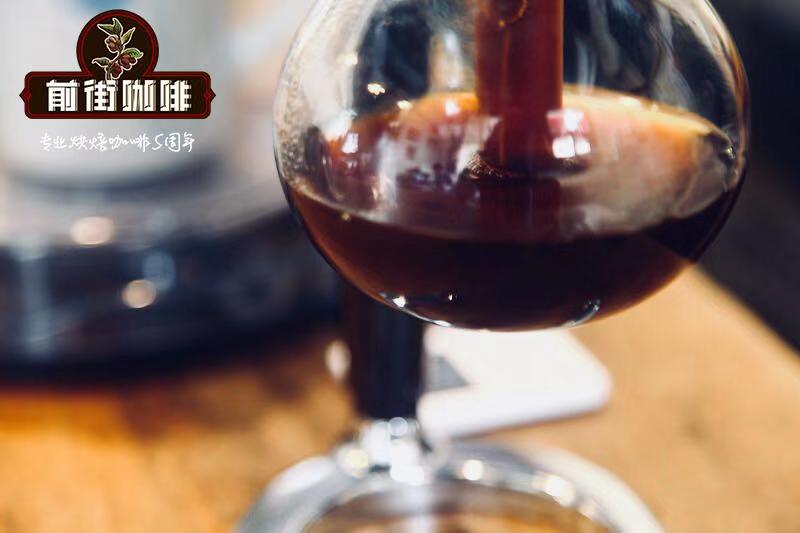Dl Brazilian coffee how to tell the true from the fake? what does the imported Brazilian coffee beans have to do with China?

Professional coffee knowledge exchange more coffee bean information please follow the coffee workshop (Wechat official account cafe_style)
In 1727, Portuguese Lieutenant Francisco de Mello Pachta (Francisco de Melo Palheta) first brought coffee from French Guiana (Guiana) to the state of Para for cultivation.
two
In 1770, coffee spread to Rio de Janeiro.
three
In 1779, Brazil exported coffee for the first time, this time about 19 bags.
four
In 1806, Brazilian coffee exports reached 20000 bags.
five
In 1820s, coffee plantations in Rio de Janeiro, S ã o Paulo and Minas Gerais grew rapidly, accounting for about 20% of world production.
six
In 1922, the coffee exchange opened in Santos.
seven
In 1830s, coffee became Brazil's largest export, accounting for 30% of the world's output.
eight
In 1845, Brazilian coffee shops accounted for 45% of the world and became the main source of economy in the state of Sao Paulo.
nine
In 1867, the first railway was built in Brazil to transport coffee beans, followed by several routes to transport coffee beans.
ten
In 1880s, 90% of Minas Gerais (Minas Gerais) coffee was grown in the Zona da Mata Mineira district.
eleven
In the early 1900s, the coffee production was overproduced and the price was falling. The government took measures to reduce imports, procurement, storage and other measures to regulate the market.
twelve
In 1920s, Brazilian coffee accounted for 80% of the market in consumer countries.
thirteen
At the beginning of 1900s, coffee accounted for 16 per cent of Brazil's GDP and 75 per cent of total exports.
fourteen
In 1920s, Brazil monopolized the international market for coffee, with a market share of 80%.
fifteen
In 1929, because the United States was the largest buyer of Brazil. The Great Depression affected Brazil. With the outbreak of the crisis, Brazilian prices have fallen sharply. To stop the decline, the Brazilian government bought and burned large amounts of coffee (about 71000 bags, which was consumed in the world for three years at the time) to maintain coffee prices.
sixteen
Since 1950s, global coffee production has been increasing, and Brazil's market share has been declining.
seventeen
In 1960, although the Brazilian government adopted various policies to reduce the share of coffee exports. But it still accounts for 60% of the total exports.
eighteen
In 1973, the Brazilian Coffee Industry Association was established.
nineteen
In 1989, the international coffee agreement broke down because an agreement was not reached in time.
twenty
In 1999, Brazil held the first COE coffee competition.
twenty-one
Today, Brazil is the largest exporter of coffee on the world market, accounting for about 1/3 of the world.
China ranks 31st in the import market for Brazilian coffee, up 10 places compared with 2017. In 2018, the Asian region imported 6532921 bags of 60 kilograms of Brazilian coffee, accounting for 19 percent of Brazil's total coffee exports.
"this growth shows that the region has great potential for development, and in traditional Asian countries such as Japan and South Korea, we can get consumers into the habit of drinking coffee and replace traditional local drinks such as tea. When our coffee entered the Asian market, consumers began to appreciate and purchase such drinks. " Matos said.
Of course, the total amount of Brazilian coffee bought by Asian countries is a far cry from that of big buyers such as the United States, Germany and Italy. In 2018, the United States, Germany and Italy bought 14.9 million bags of Brazilian coffee, accounting for 42.5 per cent of total Brazilian coffee exports. In spite of this, people in the industry are very optimistic about the prospects of the Chinese market.
"the total amount of Brazilian coffee purchased by Japan and South Korea has increased significantly over the past 30 years, while China has the largest metropolitan group in the world, and the Chinese market has the conditions to become a major global consumer market for Brazilian coffee. The data we have observed also prove that Brazilian coffee exports will increase significantly in the next few years. " Matos said.
Matos also believes that in addition to China, India and Indonesia, two developing countries with large populations, will also promote the export of Brazilian coffee.
END
Important Notice :
前街咖啡 FrontStreet Coffee has moved to new addredd:
FrontStreet Coffee Address: 315,Donghua East Road,GuangZhou
Tel:020 38364473
- Prev

Favorable conditions for Coffee cultivation in Brazil expression of coffee growing areas in Brazil
Professional coffee knowledge exchange more coffee bean information please follow the coffee workshop (Wechat official account cafe_style) Brazil is most famous for football, followed by coffee. It is the largest coffee producer and exporter in the world, and its output value accounts for more than 30% of the world's coffee output. About 300000 of the farmers here are engaged in coffee farming. Why?
- Next

Is Colombian coffee black? | what is the flavor of Colombian washed coffee beans?
Professional coffee knowledge exchange more coffee bean information please pay attention to the coffee workshop (Wechat official account cafe_style) FNC has a huge role in promoting the national coffee industry. Colombia quickly became the world's leading coffee grower, competing with Brazil and Vietnam for the title of top coffee grower in the world. As a private non-profit organization, FNC is committed to protecting coffee producers
Related
- Beginners will see the "Coffee pull flower" guide!
- What is the difference between ice blog purified milk and ordinary milk coffee?
- Why is the Philippines the largest producer of crops in Liberia?
- For coffee extraction, should the fine powder be retained?
- How does extracted espresso fill pressed powder? How much strength does it take to press the powder?
- How to make jasmine cold extract coffee? Is the jasmine + latte good?
- Will this little toy really make the coffee taste better? How does Lily Drip affect coffee extraction?
- Will the action of slapping the filter cup also affect coffee extraction?
- What's the difference between powder-to-water ratio and powder-to-liquid ratio?
- What is the Ethiopian local species? What does it have to do with Heirloom native species?

